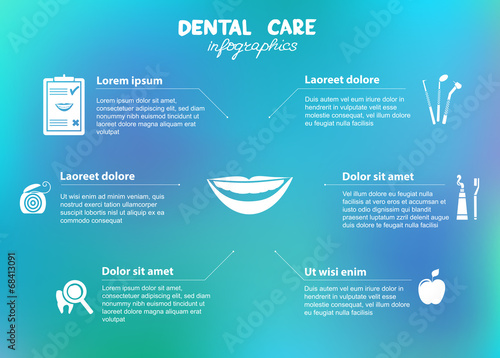Check Out The Pioneering Advancements That Are Altering The Landscape Of Oral Surgery. Investigate The Future Of The Area And Guarantee You Stay At The Forefront. Click Now For A Sneak Peek Of What Is To Find
Check Out The Pioneering Advancements That Are Altering The Landscape Of Oral Surgery. Investigate The Future Of The Area And Guarantee You Stay At The Forefront. Click Now For A Sneak Peek Of What Is To Find
Blog Article
Staff Writer-Reeves Hessellund
Welcome to the world of dental surgery, where developments and developments are forming the future of the area! In this exciting world, you'll witness the transformative power of robotics, the sophisticated wonder of 3D printing, and the game-changing influence of minimally intrusive techniques.
The future of dental surgery holds a promise of precision, performance, and boosted client results. With the help of innovative robotics, surgeons have the ability to do intricate procedures with better accuracy and control.
3D printing modern technology is transforming the development of dental implants and prosthetics, using tailored options that fit seamlessly right into each person's distinct anatomy.
In https://www.wsaz.com/2022/07/13/simpson-dental-talks-dental-implants/ , minimally intrusive methods are decreasing post-operative discomfort and recovery time, allowing individuals to return to their day-to-days live faster.
Prepare to explore the interesting technologies and breakthroughs that are reshaping the landscape of oral surgery!
Improvements in Robotics
One major development in dental surgery is using robot technology, which permits exact and reliable procedures. With the help of robotic systems, dental doctors have the capacity to do complicated surgical treatments with enhanced precision, decreasing the risk of human error.
These robotic systems are equipped with advanced imaging technology and precise tools that enable doctors to browse with elaborate physiological frameworks with ease. By using robot modern technology, specialists can attain greater medical accuracy, leading to improved patient outcomes and faster healing times.
On top of that, making use of robotics in dental surgery enables minimally intrusive procedures, minimizing the injury to bordering tissues and advertising faster healing.
3D Printing in Dental Surgery
To improve the area of oral surgery, you can check out the subtopic of 3D printing in dental surgery. This ingenious innovation has the prospective to reinvent the way dental specialists run and treat clients. Below are 4 key ways in which 3D printing is shaping the field:
- ** Customized Surgical Guides **: 3D printing allows for the creation of very exact and patient-specific medical guides, enhancing the precision and effectiveness of treatments.
- ** https://how-to-fix-periodontal-di73950.mybuzzblog.com/12632854/explore-the-essential-aspects-for-discovering-the-best-dental-doctor-to-enhance-your-smile-do-not-opt-for-mediocrity-click-currently-to-review-our-ultimate-guide **: With 3D printing, oral surgeons can produce personalized implant prosthetics that perfectly fit an individual's special composition, resulting in much better results and individual fulfillment.
- ** Bone Grafting **: 3D printing allows the production of patient-specific bone grafts, minimizing the need for standard grafting strategies and enhancing recovery and recovery time.
- ** Education and Educating **: 3D printing can be made use of to create realistic surgical designs for academic objectives, enabling oral specialists to practice complicated treatments prior to executing them on patients.
With its possible to improve accuracy, personalization, and training, 3D printing is an amazing growth in the field of dental surgery.
Minimally Invasive Strategies
To even more advance the field of dental surgery, embrace the potential of minimally intrusive strategies that can considerably profit both doctors and individuals alike.
Minimally intrusive strategies are revolutionizing the area by decreasing medical injury, decreasing post-operative pain, and speeding up the recovery process. These methods entail making use of smaller cuts and specialized instruments to execute treatments with accuracy and performance.
By using innovative imaging modern technology, such as cone light beam computed tomography (CBCT), surgeons can precisely intend and perform surgical treatments with minimal invasiveness.
In addition, using lasers in oral surgery permits specific tissue cutting and coagulation, causing lessened bleeding and decreased healing time.
With minimally intrusive methods, individuals can experience quicker recovery, decreased scarring, and improved results, making it an essential facet of the future of dental surgery.
Verdict
So, as you can see, the future of oral surgery is exceptionally appealing, with exciting developments and developments forming the area.
From the developments in robotics to the use of 3D printing and minimally intrusive methods, oral specialists are revolutionizing the method they offer treatment.
While some may stress over the prospective price connected with these improvements, it is necessary to remember that these innovations ultimately boost person end results and lower recuperation time, making them well worth the investment over time.
